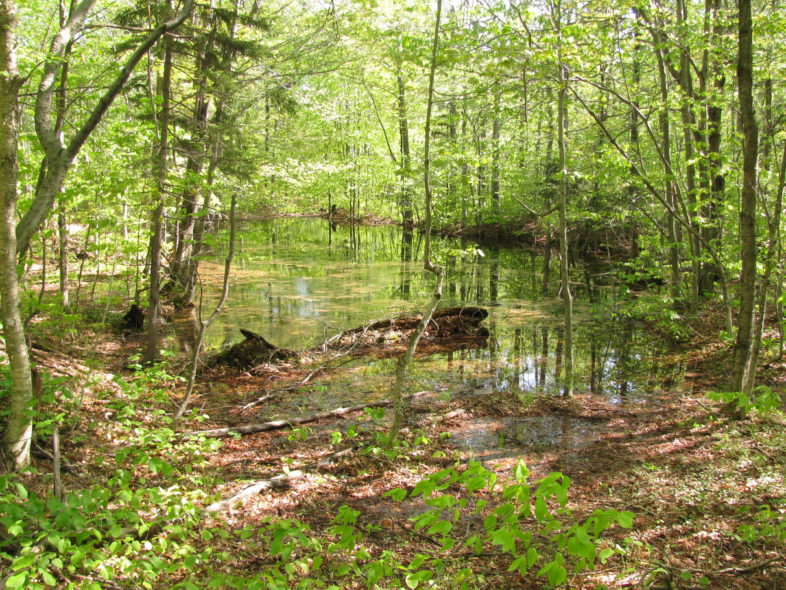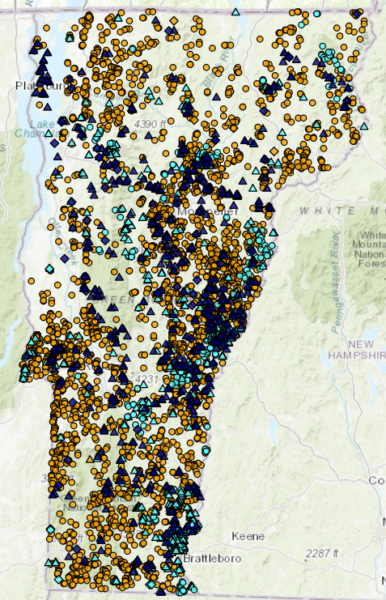
Winhall Vernal Pool © Steve Faccio
Conserving sensitive, vitally important ecosystems and natural communities, like vernal pools, is essential to addressing biodiversity loss. However, knowing vernal pools’ locations is a critical first step. The Vernal Pool Atlas (VPAtlas), a joint effort of the Vermont Center for Ecostudies and the Vermont Fish & Wildlife Department, is designed to do just that. This online, interactive database and mapping tool compiles and archives data on vernal pools in Vermont. With VPAtlas, anyone, anywhere, can browse real-time data about suspected and confirmed vernal pools across the state.
VPAtlas currently contains 5,214 records of vernal pools. Over half of these records were mapped using remote sensing techniques and are considered “potential” pools, while the remaining pools were field-visited. As pools’ statuses are confirmed with field data, they move from “potential” to “confirmed” pools, providing additional information for professionals who use the data.
By becoming a registered VPAtlas user, you can contribute field data to help confirm existing pools and add locations of new pools. By adding information, you’re helping the state biologists and wetland regulators who use these data daily better mitigate impacts to Vermont’s vernal pools. Ultimately, the data this platform provides are invaluable in helping to conserve these significant natural communities and the wildlife that depend on them to complete their life cycles.
During the past year, the VCE team has made updates and improvements to VPAtlas, including adding LiDAR coverages to the atlas basemap menu and options to download VPAtlas data. Moreover, we worked with Vermont Agency of Natural Resources (ANR) IT and GIS staff to provide a live link to VPAtlas data that will update the vernal pool layer on ANR’s BioFinder and Natural Resources Atlas, mapping tools that are widely used by foresters, natural resource managers, land planners, and others.
These updates were made possible by funding from the Vermont Fish and Wildlife Department’s State Wildlife Grants Program, along with a Vermont Watershed Grant, which is funded from the sale of Vermont conservation license plates.

